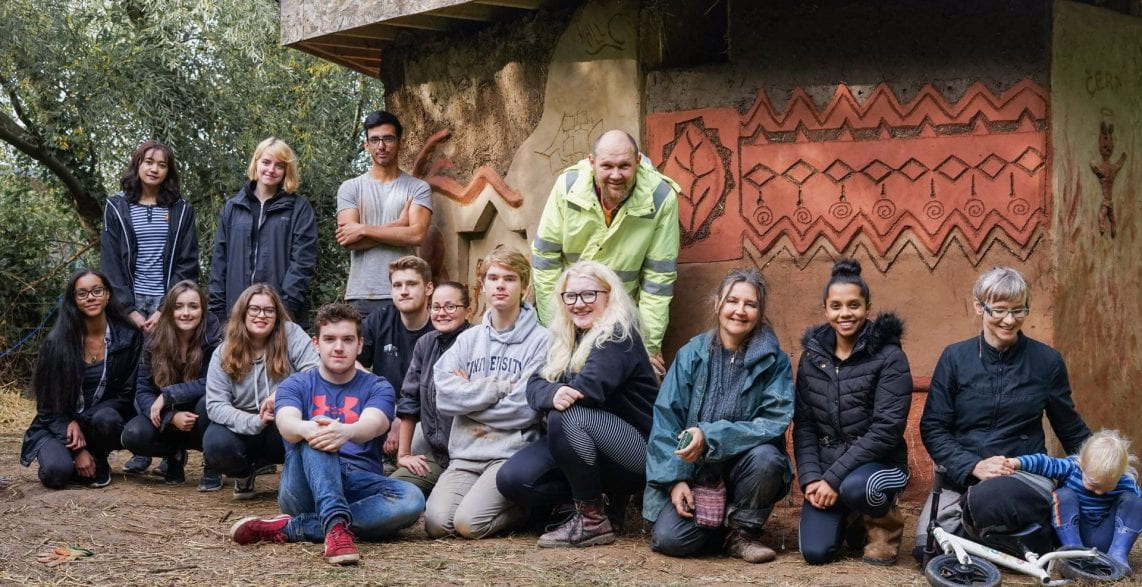MUD AND STUD: CONTEXT AND HISTORY
Lincolnshire mud and stud (M&S) has likely been the least known and the least appraised part of English heritage. However, 30 years ago something changed. A small group of enthusiasts – architects, historians and practitioners– rediscovered this technique and dedicated their careers to.
“In the low rich country they have commonly built of what is called stud and mud… buildings are of timber walled with clay… the stud-pieced as large as man’s arm”. Young encouraged landowners to build M&S for its cheapness, durability and suitability for the health and well-being for peasantry: “Smaller sort brick cottage for one family will cost £50. But of mud and stud, one third less.”(Young General View of the Agriculture of the Country of Lincolnshire, 1799).
“The Mud and Stud cottages in Lincolnshire have never been in the forefront of this picture partly because this large county seems so far away from great conurbations and partly because the construction behind rendered walls and beneath the flowing lines has been concealed or, if revealed, has seemed rude and insubstantial when compared to the robust craftsman-based construction of the timber frame” (Brunskill Ronald William, Forward to Lincolnshire Buildings in the Mud and Stud tradition by Rodney Cousins)
‘Only just over one thousand M&S structures have survived into 20th century but neglect and the stigma that ‘mud is primitive’ has led to the demolition of many of them’ (Rodney Cousins Lincolnshire Buildings in the Mud and Stud tradition, 2000) “Such houses required no professional builders in the erection; nothing but the skill of the village carpenter, and a knowledge possessed by the many folk in the village of digging the clay and puddling it” (Maurice Barley, Lincolnshire and the Fens) learning about M&S and spreading this knowledge.
in 1980s may of M&S has been demolished and even burned to the ground with the authorities’ approval. Owners feared that once listed, buildings would be impossible to refurbish. This situation changed in 1980 thanks to a project initiated by Rodney Cousins and the Museum of Lincolnshire Life. This project became a catalyst for the subsequent formation of a grassroots organization which since 1995 has been known as the East Midlands Earth Structure Society.
MUD AND STUD: TECHNIQUE
Only primary load-bearing M&S structures require better quality timber. Rails and studs are relatively thin (approximately 125mm x 125mm) and are located at approximately two metre centres. Unlike most historical frame constructions, M&S walls do not have externally exposed timber. Load bearing elements are covered under a thick external layer of earth. This solution liminates cracks which usual appear between load-bearing and non load-bearing elements and thus minimises draughts. Timber exposed inside together with ceiling beams creates characteristic interiors often appreciated by inhabitants.
Vertical laths fixed to rails, which serve as the construction’s secondary reinforcement, were made out of poorer quality timber (approx. 15mm × 50mm).
Laths create a ridged underpinning for earth walling and good background for plasters as they can be well wetted, this assisting the slower drying of the plaster and thus giving a stronger key. Using this inner frame allows walls to be more economic and thinner. M&S walls can typically be as thin as 250mm.
The plan of an M&S cottage is determined by the central chimney stack which traditionally divides the building into two parts. Access to the upper rooms is usually via ladder. These rooms, typically possessing a 500mm knee wall are often entirely within the roof space. Half-hipped roofs covered traditionally with thatch or reed gave those cottages their distinctive picturesque look.
